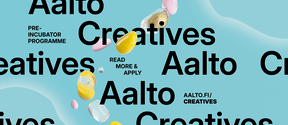Not blinded by the light: Rods in the retina contribute to daylight vision
An international research team headed by Thomas Münch from Tübingen University found the contribution of rod photoreceptors in mouse retinas to be much greater than previously assumed. Rods cannot distinguish between colours and were thought to become useless as light levels increase, while vision in daylight conditions is based on cone photoreceptors. The new study – published in Nature Communications – shows that rod function can even increase in bright light.
The photoreceptors in the retina, at the back of the eyes, are the primary light sensitive cells that allow us to see: they convert light into electrical signals. There are two types, rods and cones, and it has generally been assumed that rods are responsible for seeing in dim light conditions, whereas cones mediate vision in bright light. This division of labour between rods and cones can be found in virtually every biological and medical text book.
A new study challenges this traditional view: A group of researchers from Aalto University, the University of Helsinki and the universities of Tübingen and Manchester shows that rod photoreceptors do, in fact, contribute to daylight vision. Most surprisingly, their contribution even increases when the daylight becomes brighter, up to the brightest light levels that would ever be encountered in natural environs.
Using transgenic mice without functional cones, the investigators first measured rod-driven signals and could reliably detect them both in the retina and in the brain even at high light levels. Now that they had isolated these rod-driven signals, they were able to identify them in mice with fully functional cones as well. Their explanation of the mechanism by which rods function in bright light is based on knowledge of light adaptation in rods and the rod visual cycle, the process helping rods to recycle visual pigment after it has been bleached by light.
“We showed that rods can function at bright light”, says Thomas Münch, “but it is true that cones can do this much better and much more reliably. However, these new insights may still open new avenues towards treatments for patients without functional cones, so-called rod monochromats.” People in modern times are exposed to artificial bright light for many hours each day. In the old paradigm, this has made reliance on rods for the development of treatments counterintuitive. With these new mechanistic insights into bright rod vision, however, there may be new possibilities for therapies for patients without functional cone vision.
The study was conducted by the research groups of Thomas Münch (University of Tübingen) and Rob Lucas (University of Manchester). Dr. Ala-Laurila from Aalto University Finland contributed to the mathematical modelling of the results.
Publication:
Alexandra Tikidji-Hamburyan, Katja Reinhard, Riccardo Storchi, Johannes Dietter, Hartwig Seitter, Katherine E. Davis, Saad Idrees, Marion Mutter, Lauren Walmsley, Robert A. Bedford, Marius Ueffing, Petri Ala-Laurila, Timothy M. Brown, Robert J. Lucas, Thomas A. Münch: Rods progressively escape saturation to drive visual responses in daylight conditions. Nature Communications 2017 Nov 27; 8. DOI: 10.1038/s41467-017-01816-6
Link to the article (nature.com)
Further information:
Petri Ala-Laurila
Professor, Aalto University
tel. +358 45 851 6516
petri.ala-laurila@aalto.fi
Read more news

Your voice gives away valuable personal information, so how do you keep that data safe?
With speech technologies becoming increasingly common, researchers want to make sure we don’t give away more information than we mean to.
A new way to measure contagion: the gut bacterium behind blood poisoning can spread like influenza
Neither the antibiotic-resistant nor the highly virulent strains are the most transmissible.
Cross-sectoral working group: Competitiveness, security and green transition must be promoted as a whole
A cross-sectoral working group for universities, businesses and cities is proposing that Finland speed up its international competitiveness, national security and green transition as one entity. The group suggests that, for example, defence procurement could support solutions aimed at a carbon-neutral society.






